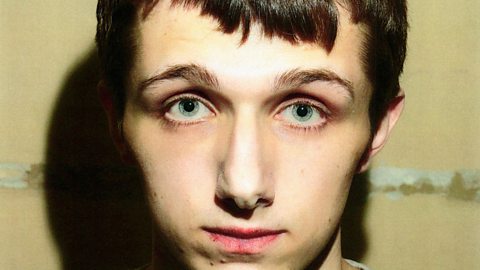Is Japan turning a blind eye to paedophilia?

Ciaran Varley
Warning: Contains content you may find disturbing
There’s a street in Tokyo known as "JK alley", or "schoolgirl alley", from the Japanese Joshi Kosei, meaning high school girl.
There, teenagers in school uniform sell their time to passers-by, while their minders hover in the background.
Men pay to hold hands, go for a walk or have a cup of coffee with the girls. Some even pay to sleep on a girl's lap.
This is all legitimate, above board and legal.
Japan is also home to 300 "JK cafes", where adult men pay to hang out with underage girls (the age of consent in Japan is 18).
In the new BBC Three documentary, Young Sex For Sale in Japan, Stacey Dooley visits a JK cafe in Tokyo.
“In this bar, £35 will get you forty minutes with a girl of your choice and unlimited booze,” she says.
In some cafes, men can also pay for "walking dates" – time with the girls away from the cafe. What happens in that time is up to the girls and their clients.
One customer shows Stacey his favourite girl, a 17-year-old with long, light brown hair and a thick fringe. He likes her “because she’s good at talking dirty, but she pretends to be pure”.
Another customer tells Stacey, “the age gap thing for some people is off-putting but, in Japan, maybe it’s our culture - our attitude is quite different”.
Stacey wonders whether the JK business is harmless fun or possibly “a bit more exploitative and sinister”.
It’s estimated that nearly 5000 genuine schoolgirls work in these (legal) cafes in Japan.
Until 2014 child pornography was legal to own in Japan. The law has changed, but the sexualisation of minors continues.
"Chaku Ero", which means "erotically clothed" is a kind of soft porn - it doesn’t involve nudity, but it can get very, very close and is often overtly sexual.
Stacey asks a Chaku Ero producer (who wanted to remain anonymous) how young the girls in his shoots are.
“My youngest was six-years-old,” he says. “We filmed her in her bathing costume playing with some toys. Her mum was standing behind the camera holding her favourite toy so she would face the camera.”
He makes much more money filming children than older girls. The DVD of the six-year-old made him “four million (£28,500) or five million yen (£35,500),” he says. “The senior high school girls will make about one million (£7000)”.
When Stacey asks how he would feel if someone had shot his own 16-year-old daughter the way he shot that six-year-old girl, he pauses.
“I would force both of us to commit a joint suicide,” he says.
“Are you serious?” Stacey asks him.
“Yes."
As long as Chaku Ero photos don’t show the child’s naked genitals, buttocks or chest, it isn’t categorised as child pornography.
But, according to Kazuko Ito, a Human Rights Lawyer who is trying to challenge this definition, “Chaku Ero is child pornography. That’s the reality.”
Owning child pornography became illegal in Japan in June 2014. In the 12 months between July 2015 and July 2016, there were 37 cases sent to public prosecutors on grounds of owning this material.
In the UK, in 2015 and 2016, there were more than 5000 arrests for possession, with 481 found guilty.
Why is there such a massive gulf?
Under Japanese law, when they find an abusive image, they need to identify the child, confirm they are underage and, in order for an investigation to proceed, the victim has to bring charges. Arrests will only be made if the evidence against the perpetrator can guarantee a conviction, so it’s a lot tougher to prosecute than in the UK.
Perhaps one thing that Westerners may notice is a different attitude to young girls. As Stacey says, “one of the things that slaps you in the face when you arrive in Japan is their obsession with everything cute”.
She believes there is an issue that goes “much deeper than child porn”.
Domestic sales of manga comics topped over £2 billion in Japan in 2015.
"Lolicon" (short for "Lolita complex") is the Japanese term for manga and anime featuring sexually explicit images of children. It can involve extreme violence, rape and incest.
Comics with these types of abusive images have been banned in the UK.
The Japanese Government tried to ban these images too, but artists and publishers resisted on the grounds of free speech. Dan Kanemitsu is one of those who argues against the ban. He’s spent 20 years translating Japanese manga.
“There is a child being harmed, on the one hand, and then there is a depiction of a child being harmed. There is a big difference between the two,” he says.
He disagrees with the idea that this kind of material could normalise the sexual abuse of children in Japan and even argues that the comics provide a “venting mechanism” for those with paedophilic fantasies.
Either way, steps are being taken to change things.
The head of the juvenile section at Japan’s National Police Agency says that JK cafes will no longer be able to have girls under eighteen serving customers (but that doesn’t mean they won’t still be dressed as schoolgirls).
With laws around around Chaku Ero, JK cafes and sexually explicit manga continuing to inhabit a grey area, you have to ask, is Japan turning a blind eye to paedophilia?
Watch Stacey Dooley Investigates: Young Sex For Sale in Japan on iPlayer.
If you have been affected with issues raised in this article, help and advice is available here.









